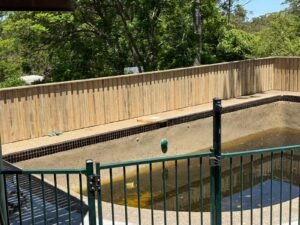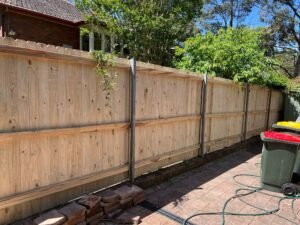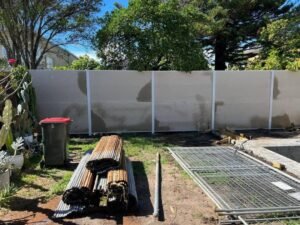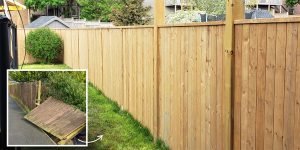Pulling off a successful DIY project could leave you feeling on top of the world. You’ve saved money, impressed your friends or partner, built something productive and attractive with your very own two hands…it’s a great feeling! On the flip side, beginning a DIY project feeling confident and having things not go to plan can leave you feeling exactly the opposite of that. You might feel like you have wasted money, time and ended up with a junky project that needs to be carted off to the tip or repaired by a professional. We’ve put together a list of the top 10 common DIY fencing disadvantages.
Choosing the wrong type of fence
One of DIY fencing disadvantages is when it comes to choose a right fence type! You might have a preferred type of fence in your mind, but do you know if this is actually the best choice for your property? Different types of fences offer differing functional pros and cons. If you live in a property that’s prone to damp, moist weather or often has insect issues – this might not be the best option for you! As well as your choice of material, the style of your fence can also alter your fencing experience. Are you trying to pen in a large and boisterous dog? Are you looking for something in a high-crime area that will keep out intruders? All of these requirements mean that a particular type of fence material, thickness and design will be the best for your property – it’s best to talk about your needs and options with a professional.
Installing your fence too close or over the boundary line
You need to be aware of the boundaries of your property before you try to install a fence. Installing the fence on your neighbour’s property may result in a very unpleasant situation, especially if your neighbour reacts badly and demands that you tear it down. Not only shouldn’t you install a fence on land that you don’t own, but you should also actually leave a buffer of half a metre to a metre. This allows you to maintain your fence and accounts for any protruding parts on your neighbour’s side.
Not planning your entire fence at the start
It’s widely acknowledged that renovations end up costing more than initially quoted and taking longer than originally planned. Unexpected obstacles or delays popping up is just a regular part of any construction project, so it’s important to plan your fencing project. Make sure you have enough materials to cover the space and that you have council permission for any aspect of the fencing project that requires council approval. It’s also important to ensure that you’ve informed your neighbours of the planned work before you commence.
Building over utility lines or pipes
Uh oh – nothing’s going to be more of a disaster than hitting a utility line or a septic tank. Not only could that spell trouble for you, but it may also affect your neighbours or even the entire street. You’re not going to win any popularity contest taking away everybody’s electricity! This avoidable fencing disaster ties into inadequate planning, as you will need to figure out where all utilities lie and plan your anchor posts to miss these parts.
the incorrect post depth
If you’d like a fence that doesn’t fall down come during the first day of heavy wind, this point is pretty important. It’s very common for people to underestimate the depth that they need to achieve to set the fence posts. It’s no simple feat to calculate all of this yourself, which is why it’s best to rely on the expert. If you think you can just stick it into the wood and wiggle it around, you should be aware that sometimes the depth of the fence below the ground is equal to the height of the wall above it.
Putting fence posts too close together or too far from each other
Are you aware of how critical the spacing between your posts is to the length of the life of your fence? If your fence is too tightly packed, you may face warping or strain on the structure as wood, iron, and aluminium are all privy to expanding and contracting. On the flip side, building your fence with wide gaps will make it less secure for pets and small children and allow prying eyes to see into your property.
Maintenance on the fence
If you do manage to build a well-constructed fence, it would simply be a disaster to ruin it at the last moment by failing to plan the correct maintenance for it. Even though fencing materials are typically very long-lasting and durable against weather elements, you still need to be aware of potential problems that they may face. For example, investing in powder coating instead of painting will not only give your fence a sleek aesthetic appeal but will also provide a protective layer to help it withstand extreme heat and storms.
Building a fence too high or too low
If you build a fence too low, you won’t achieve the privacy that you wanted, and your yard will be more vulnerable to storms and winds. If you build your fence too high, you may be violating your local council building guidelines. Due to the fence posts needing to be buried, you can’t buy the length of the fence posts just by eyeballing them, as you’ll need to consider how much will be buried in the soil. and this is one the DIY fencing disadvantages





